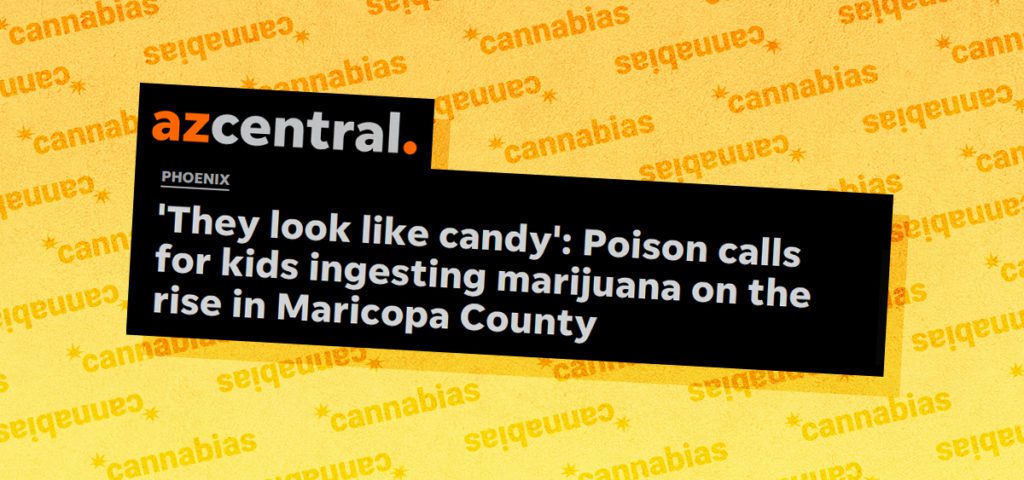The Arizona Republic runs a fearmongering headline and presents a one-sided story in their coverage of accidental consumption of cannabis by children.
Arizona Republic Coverage of Accidental Consumption Misses Key Post-Legalization Issues

Full story continued below.
Advertisement
In this edition of Cannabias, we examine a recent news story that made the rounds in the mainstream media, pertaining to cannabis gummies being consumed accidentally by children in states where it has been legalized.
The Arizona Republic article, “‘They look like candy’: Poison call for kids ingesting marijuana on the rise in Maricopa County,” (July 12, 2021) describes an increase in reported cases of children who accidentally consumed cannabis-infused products.
Presence of bias:
This article contains two bias types: context and omission bias. The article fails to put into perspective several issues or provide additional information that may cause less alarm.
Ideal, Baseline and Evidence: The ideal for any article focusing on post-legalization issues related to child ingestion of cannabis edibles would not include a click-bait headline, such as the Republic’s “They look like candy…”, because the headline implies that the products are created by the cannabis manufacturer with the purpose of appealing to children.
While infused gummies are candy, there is an expectation that parents should carry the burden of keeping their children safe — just as they would with colorfully-packaged and fruit-flavored alcoholic beverages kept in their fridge, like hard cider. Cannabis companies, by-and-large, don’t want children consuming their products, but they cannot control who has access to their products once they leave their business.
Further, the state of Arizona only just recently legalized cannabis. Once more people have access to a product, of course there are going to be more accidents involving that product. It’s also more likely that parents feel safer bringing their children to the ER following an accidental ingestion now that cannabis is no longer criminalized, which would also contribute to an increase in the total number of visits.
The third graph highlighted by the Republic also leaves out the number of calls from THC exposure from 2016-2020, so using data, such as “as recently as five in 2014” makes it seem like there is a sudden spike but does not offer any additional context. Hard news articles should not cherry-pick information.
While the reporter quotes Maureen Roland, a registered nurse at the Banner Poison and Drug Information Center, the story fails to include any other sources or voices in the piece speaking to the issue.
The article does point out, rightly, that no one has died, but then relies on the opinion and speculation of Roland. The article should include physicians from other states with a mature market who have witnessed the longer-term trends over several years. Also, it leaves out data from the rest of the state, which would certainly be helpful for a broader perspective.
How to remedy:
To avoid bias in their reporting, the author could have simply included elements discussed in the IBE discussion but also pointed out some other statistics for comparison’s sake: such as how many children are brought to the ER for accidental ingestion of pharmaceuticals, or alcohol and how many of those ER visits lead to death.
Including the fact that there have been no fatalities in the lede graph would also help balance the story. The headline could read, “Poison calls for kids ingesting marijuana on the rise in Maricopa County: No Deaths,” which would serve to inform the reader rather than baiting for clicks, which seems to be the goal of the current headline structure (this is also known as structural bias).
To be clear, this is an issue that should be covered, and parents in states where cannabis is legal should be informed about their responsibilities and the potential outcomes of storing products where they can be accessed by children. The expectation is not that coverage related to accidental cannabis consumption by children be ignored; however, in order to prevent fear mongering, journalistic reporting should include all relevant information, including experts, other stakeholders, and any available research on the topic. This story fails to meet those expectations due to its failure to provide context and the omission of other relevant facts and voices.
Get daily news insights in your inbox. Subscribe
End